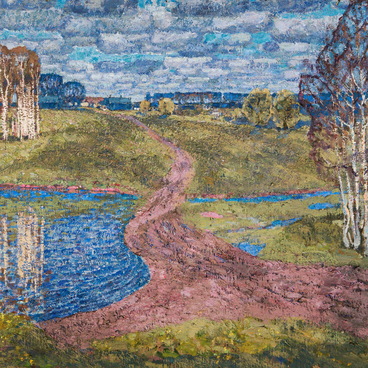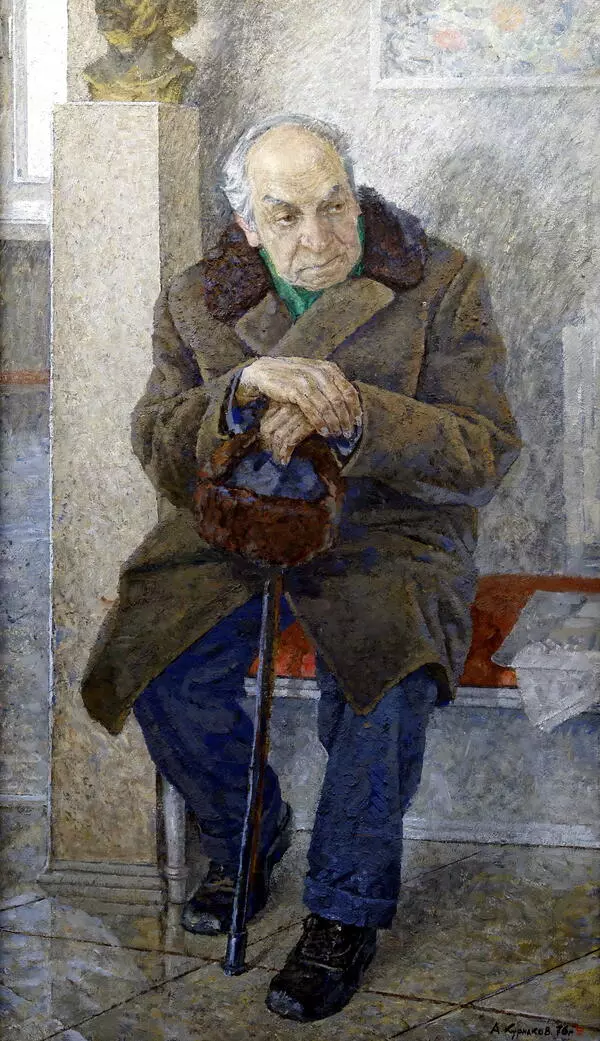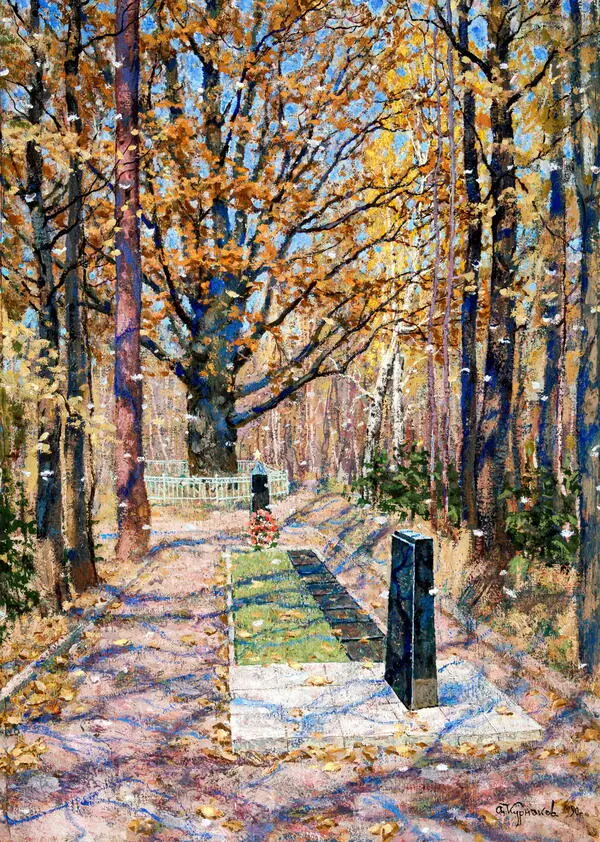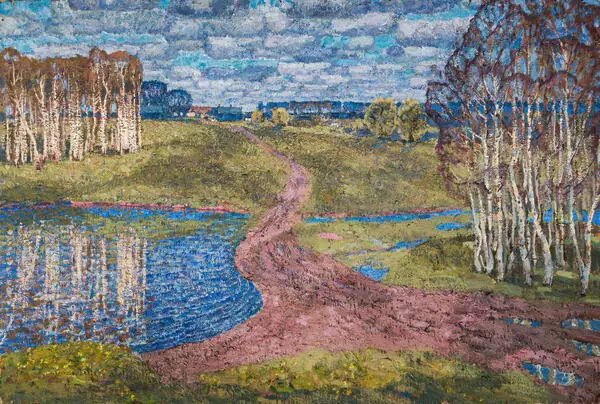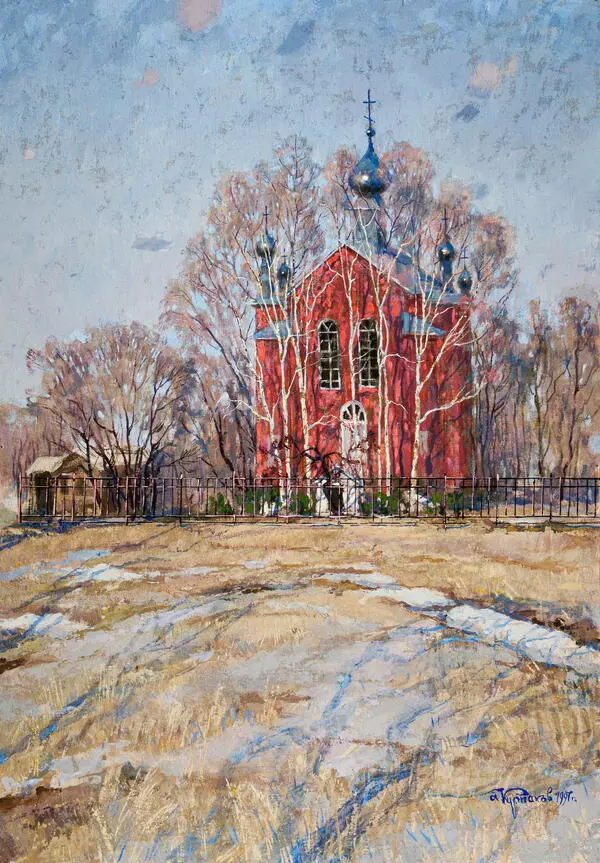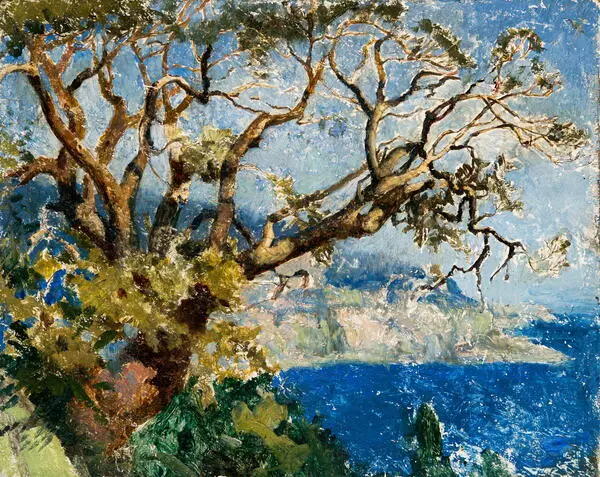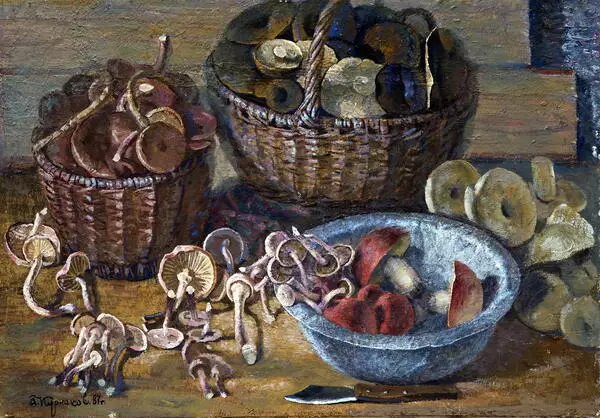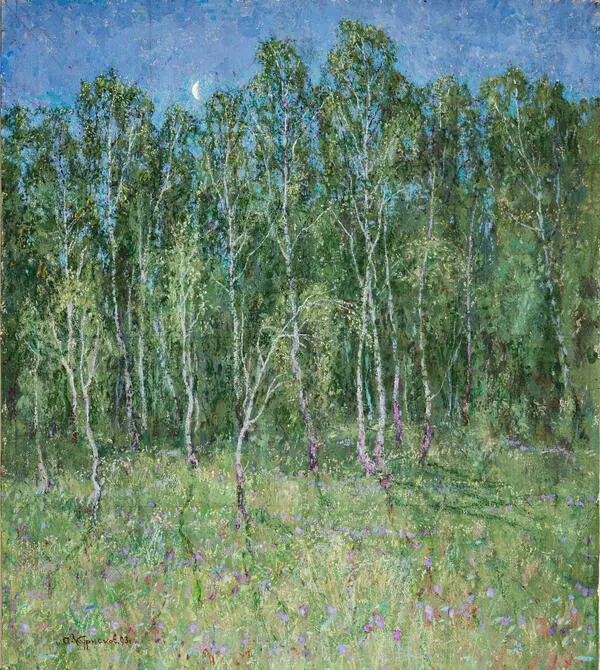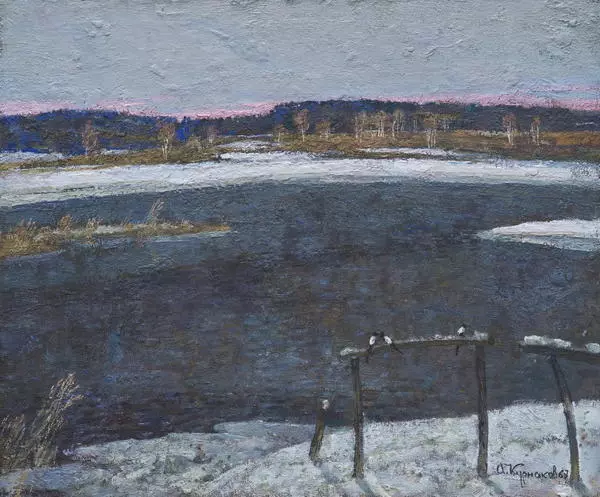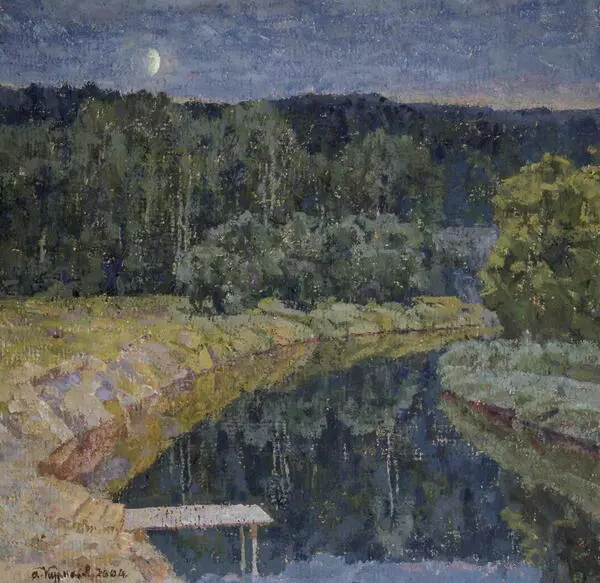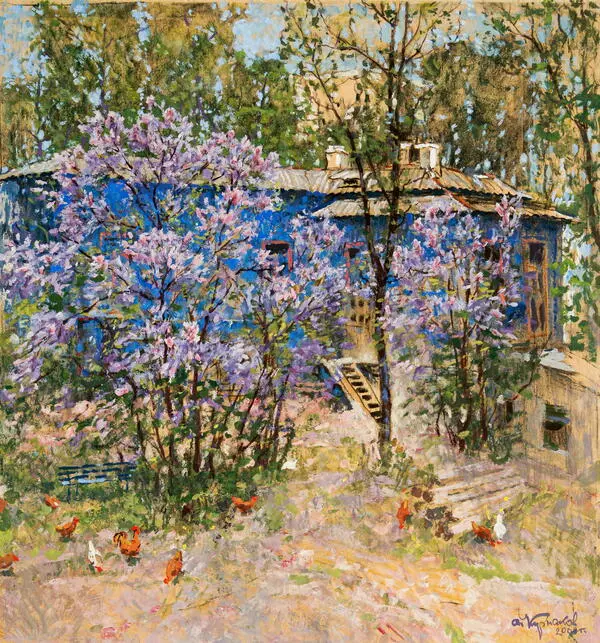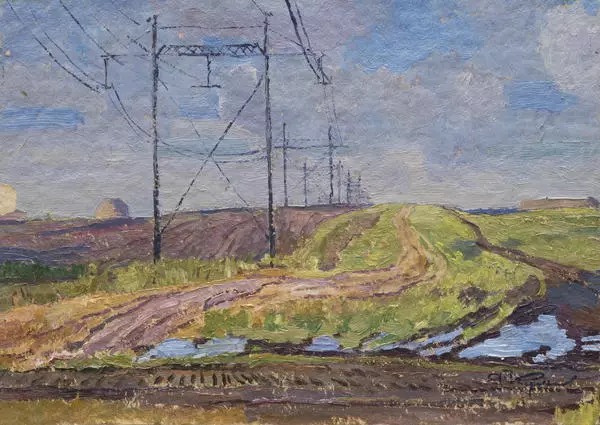Andrey Kurnakov borrowed the name “February Azure” for his work from Igor Grabar, a famous Russian and Soviet artist. Grabar was born in Budapest in 1871; eight years later, his family moved to Russia, where the boy received his general education at the Imperial Lyceum, while Ilya Repin taught him art. He flourished as a painter in the early 20th century, standing out with his peculiar rendition of frost and snow. He was also known as a teacher, an art critic, and a restorer. He was the head of the Tretyakov Gallery and supervised the distribution of nationalized (that is, seized by the Soviet government) works of art over museums, which he established himself. Grabar personally advised Joseph Stalin on the preservation of architectural heritage.
Grabar is famous for his penchant for winter landscapes. “February Azure”, painted after a walk in a forest outside Moscow, is one of his best works.
Winter forests left a lasting impression on Kurnakov as well. Fascinated by the state of nature, he strove for the verisimilitude in the painting. It seems that the artist was impressed beyond words by that strikingly beautiful sight before his eyes — the iridescence of all colors of the rainbow against the blue enamel of the sky.
The picture depicts a frosty sunny morning. Crispy freshness emanates from everything — the immense azure sky, the birches, the snow. The painting has an unusual composition. At first glance, the birds and birch trunks seem to be the focal point. However, once viewed at a certain distance, the canvas reveals Kurnakov’s favorite technique — shadows cast by the trees, and from their reflection, it becomes clear that the artist wants to add a sense of etherealness, distort the space, and change the perspective.
The artist chooses translucent azure shades. This color palette perfectly conveys the frosty freshness of the forest. Bullfinches with their red, crimson, and pink breasts contrast with the cold winter background, bringing brightness and a certain melody into the landscape.
Although known as a follower of realism, this painting makes Kurnakov seem like a true impressionist. He does not need too much detailing to convey the feelings that overwhelm him. With broad sweeping strokes, he expresses the delight he takes in the beauty, melody, and poetry of the Russian winter.
Grabar is famous for his penchant for winter landscapes. “February Azure”, painted after a walk in a forest outside Moscow, is one of his best works.
Winter forests left a lasting impression on Kurnakov as well. Fascinated by the state of nature, he strove for the verisimilitude in the painting. It seems that the artist was impressed beyond words by that strikingly beautiful sight before his eyes — the iridescence of all colors of the rainbow against the blue enamel of the sky.
The picture depicts a frosty sunny morning. Crispy freshness emanates from everything — the immense azure sky, the birches, the snow. The painting has an unusual composition. At first glance, the birds and birch trunks seem to be the focal point. However, once viewed at a certain distance, the canvas reveals Kurnakov’s favorite technique — shadows cast by the trees, and from their reflection, it becomes clear that the artist wants to add a sense of etherealness, distort the space, and change the perspective.
The artist chooses translucent azure shades. This color palette perfectly conveys the frosty freshness of the forest. Bullfinches with their red, crimson, and pink breasts contrast with the cold winter background, bringing brightness and a certain melody into the landscape.
Although known as a follower of realism, this painting makes Kurnakov seem like a true impressionist. He does not need too much detailing to convey the feelings that overwhelm him. With broad sweeping strokes, he expresses the delight he takes in the beauty, melody, and poetry of the Russian winter.

